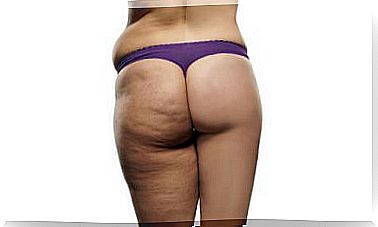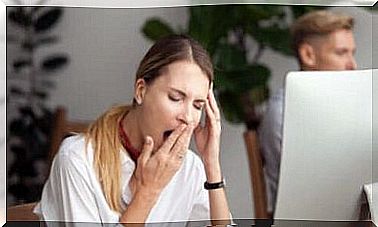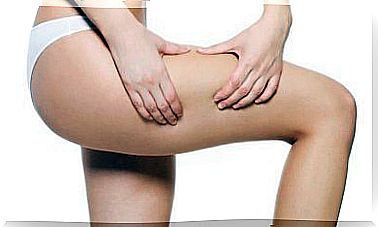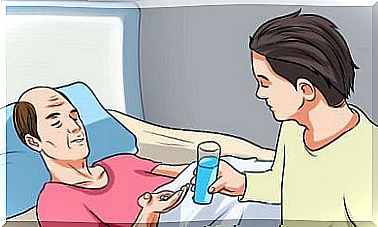The Cause Of Fat Lumps On The Back

The discovery of fat lumps on the back usually causes concern in the person who finds them. Sometimes there is not just one, but one that is accompanied by other smaller knots, making the person even more worried.
In each case, it is important to make a differential diagnosis of the lesion. In other words, although it may look like a lump of fat, it may be another disorder, such as a cyst or an abscess.
While it is true that fat is the most common cause of this symptom, it does not hurt to have it checked by a doctor to find out the real cause of the problem. Sometimes, a study alone is enough to determine where the nodule originated, without the need for further testing.
More specifically, an accumulation of fat under the skin is called a lipoma. The name refers to its structure consisting of fat cells.
Lipomas are not malignant and are generally limited to a size that does not affect other structures in the body. However, large lipomas and internal lipomas can lead to unexpected complications where they end up interfering with the function of other organs.
Differential diagnosis of fatty nodules
As we mentioned above, the presence of a fat lump on the back requires a differential diagnosis. One needs to find out if one is dealing with a lipoma or other skin lesions with similar symptoms. Below, we will describe the three most common types in detail.

1. Lipomer
This is a classic fat lump. It grows slowly and gradually, and becomes visible when the patient discovers it, sometimes by chance. It is not painful and reaches a point where it stops growing, with the exceptions we have mentioned.
If it is small, doctors do not recommend doing anything. However, if it is large or aesthetically pleasing, it can be removed with local surgery.
2. Abscesses
An abscess is an infection in a hair follicle. It can appear on your back, especially on the lower back where there is more hair. Sometimes, it hurts, while other times it does not. The pain is usually associated with the infection.
If there is a complication, pus appears, which puts pressure from the inside, in the attempt to get out. That’s why it’s different from a lipoma that does not have secretions. Treatment of an abscess consists of antibiotics if there is an infection, drainage if there is pus, and cleansing of the wound with antiseptic.
3. Cysts
This lesion is very similar to lipomas since it also contains fat. The histological difference, however, is that it has a cyst as a surface and a fluid inside. Although this type of cyst very rarely hurts, it can become inflamed, like an abscess.
They move and sink even a little bit when there is pressure. Like a lipoma, the treatment is based on its size and the discomfort it causes. If the patient decides to remove it, they will need a local surgery to do so.
Symptoms and risk factors for fat lumps on the back
Fat nodules or lipomas are common on the back. Still, they can also appear on the arms and neck. It is not common for them to show up on their feet.
When you touch a lipoma, it moves around a bit and feels soft. It may sink when pressed, but it is not liquid, like a cyst. It thus provides some resistance on examination. It is usually very easy for doctors to identify them, because of these characteristics.
Most fat nodules are no larger than 2.5-5 cm. If it is larger, it is usually a giant lipoma, which is a condition in itself. It requires a different approach because it penetrates deeper structures and it is not easy to remove, as in other cases.
Experts do not know the exact origin of lipomas. They assume that there is some kind of genetic link, since fat nodules repeatedly appear in families with this tendency. But, so far, there are no conclusive studies.
In terms of age, the most affected group is adults between the ages of 30 and 60. There is also no clear information as to why they affect adults the most.
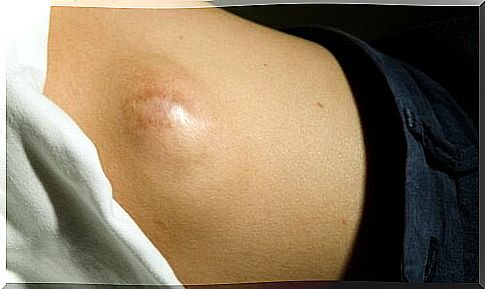
When to go to a doctor if you have lumps of fat on your back
If you notice a lump of fat on your back, you should see a doctor to get a differential diagnosis. Healthcare professionals will be able to quickly distinguish whether it is a lipoma or another condition. Likewise, they will be able to indicate complementary methods or not, based on how advanced it is.
Some additional symptoms warn of the need to see a doctor quickly, such as:
- If the fat lump gets bigger.
- Presence of pus to be drained.
- Curing of the putative lipoma, with loss of mobility and softness.
- Swollen glands near the area.
Pay attention to fat lumps on the back
Although lipomas are benign, they require attention. It is best to go to your doctor to get a differential diagnosis, rather than being in doubt. This is even more so if your symptoms make you suspect an infection, pressure on surrounding structures or the lump getting bigger.


